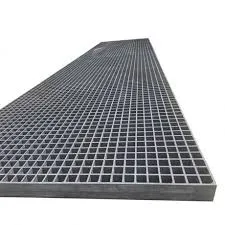
-
 Afrikaans
Afrikaans -
 Albanian
Albanian -
 Amharic
Amharic -
 Arabic
Arabic -
 Armenian
Armenian -
 Azerbaijani
Azerbaijani -
 Basque
Basque -
 Belarusian
Belarusian -
 Bengali
Bengali -
 Bosnian
Bosnian -
 Bulgarian
Bulgarian -
 Catalan
Catalan -
 Cebuano
Cebuano -
 China
China -
 China (Taiwan)
China (Taiwan) -
 Corsican
Corsican -
 Croatian
Croatian -
 Czech
Czech -
 Danish
Danish -
 Dutch
Dutch -
 English
English -
 Esperanto
Esperanto -
 Estonian
Estonian -
 Finnish
Finnish -
 French
French -
 Frisian
Frisian -
 Galician
Galician -
 Georgian
Georgian -
 German
German -
 Greek
Greek -
 Gujarati
Gujarati -
 Haitian Creole
Haitian Creole -
 hausa
hausa -
 hawaiian
hawaiian -
 Hebrew
Hebrew -
 Hindi
Hindi -
 Miao
Miao -
 Hungarian
Hungarian -
 Icelandic
Icelandic -
 igbo
igbo -
 Indonesian
Indonesian -
 irish
irish -
 Italian
Italian -
 Japanese
Japanese -
 Javanese
Javanese -
 Kannada
Kannada -
 kazakh
kazakh -
 Khmer
Khmer -
 Rwandese
Rwandese -
 Korean
Korean -
 Kurdish
Kurdish -
 Kyrgyz
Kyrgyz -
 Lao
Lao -
 Latin
Latin -
 Latvian
Latvian -
 Lithuanian
Lithuanian -
 Luxembourgish
Luxembourgish -
 Macedonian
Macedonian -
 Malgashi
Malgashi -
 Malay
Malay -
 Malayalam
Malayalam -
 Maltese
Maltese -
 Maori
Maori -
 Marathi
Marathi -
 Mongolian
Mongolian -
 Myanmar
Myanmar -
 Nepali
Nepali -
 Norwegian
Norwegian -
 Norwegian
Norwegian -
 Occitan
Occitan -
 Pashto
Pashto -
 Persian
Persian -
 Polish
Polish -
 Portuguese
Portuguese -
 Punjabi
Punjabi -
 Romanian
Romanian -
 Russian
Russian -
 Samoan
Samoan -
 Scottish Gaelic
Scottish Gaelic -
 Serbian
Serbian -
 Sesotho
Sesotho -
 Shona
Shona -
 Sindhi
Sindhi -
 Sinhala
Sinhala -
 Slovak
Slovak -
 Slovenian
Slovenian -
 Somali
Somali -
 Spanish
Spanish -
 Sundanese
Sundanese -
 Swahili
Swahili -
 Swedish
Swedish -
 Tagalog
Tagalog -
 Tajik
Tajik -
 Tamil
Tamil -
 Tatar
Tatar -
 Telugu
Telugu -
 Thai
Thai -
 Turkish
Turkish -
 Turkmen
Turkmen -
 Ukrainian
Ukrainian -
 Urdu
Urdu -
 Uighur
Uighur -
 Uzbek
Uzbek -
 Vietnamese
Vietnamese -
 Welsh
Welsh -
 Bantu
Bantu -
 Yiddish
Yiddish -
 Yoruba
Yoruba -
 Zulu
Zulu
Exploring the Innovations in GRP Car Body Design and Performance
Exploring the Innovations in GRP Car Body Construction
The automotive industry is undergoing a significant transformation with the rise of advanced materials that strive for both performance and sustainability. One of the most promising materials in this evolution is Glass Reinforced Plastic (GRP). GRP is a composite material composed of a polymer matrix reinforced with glass fibers, offering a unique blend of lightweight properties, strength, and resistance to corrosion. This article delves into the significance of GRP in car body construction, its benefits, applications, and the future of automotive design.
1. The Advantages of GRP
The utilization of GRP in car body construction presents numerous advantages. First and foremost, the lightweight nature of GRP contributes significantly to fuel efficiency. Reducing vehicle weight is a key factor in improving fuel economy, as a lighter vehicle requires less energy to operate. As the automotive industry shifts towards sustainability, GRP provides a viable solution to enhance efficiency and reduce carbon footprints.
Additionally, GRP boasts remarkable strength and durability. It can withstand impact better than some traditional materials, such as steel, making vehicles safer without compromising structural integrity. Furthermore, GRP is resistant to environmental factors like rust and UV degradation, extending the lifespan of vehicle exteriors and reducing maintenance costs.
2. Enhanced Design Flexibility
Another noteworthy aspect of GRP in car body construction is design flexibility. The material can be molded into complex shapes and intricate designs, allowing manufacturers to create aesthetically pleasing and aerodynamically efficient vehicles. Unlike traditional metal materials that require extensive machining, GRP can be produced with less waste, facilitating more sustainable manufacturing processes.
Car designers are increasingly leveraging this flexibility to push the boundaries of automotive aesthetics. With GRP, it's possible to develop unique body styles that stand out in a saturated market, ensuring brands can differentiate themselves and appeal to a diverse range of consumers.
grp car body

3. Applications in the Automotive Sector
The applications of GRP in the automotive sector are varied and continue to evolve. From sports cars to luxury vehicles, GRP is used to create body panels, chassis components, and even interior elements. High-performance vehicles, for instance, often incorporate GRP to achieve significant weight reductions, enhancing speed and agility.
Moreover, electric vehicles (EVs) are increasingly employing GRP in their construction. The lightweight nature of GRP is particularly advantageous for EVs, as it can improve battery efficiency and overall range. As the market for electric vehicles expands, the integration of GRP into their design represents a substantial shift towards more sustainable and efficient automotive solutions.
4. Future Prospects
Looking forward, the future of GRP in car body construction appears promising. Ongoing research and development are expected to lead to even more advanced iterations of GRP that could further enhance its properties. Innovations in manufacturing techniques, such as automated processes and 3D printing, are likely to reduce production costs and open up new possibilities for customization.
Furthermore, the shift towards circular economy principles in the automotive industry could boost the use of recyclable materials, including GRP. As manufacturers strive to create more sustainable vehicles, the ability to reclaim and recycle GRP could play a crucial role in minimizing waste and environmental impact.
5. Conclusion
In conclusion, the adoption of Glass Reinforced Plastic in car body construction presents a myriad of benefits that cater to the evolving demands of the automotive industry. The lightweight and durable nature of GRP enhances fuel efficiency, safety, and design versatility while contributing to longer vehicle lifespans. As manufacturers continue to explore innovative applications and sustainable practices, GRP is poised to play an integral role in shaping the future of automotive design. The journey of GRP in the automotive sector is just beginning, and its potential impact is undeniably exciting as we accelerate towards a more sustainable future.









